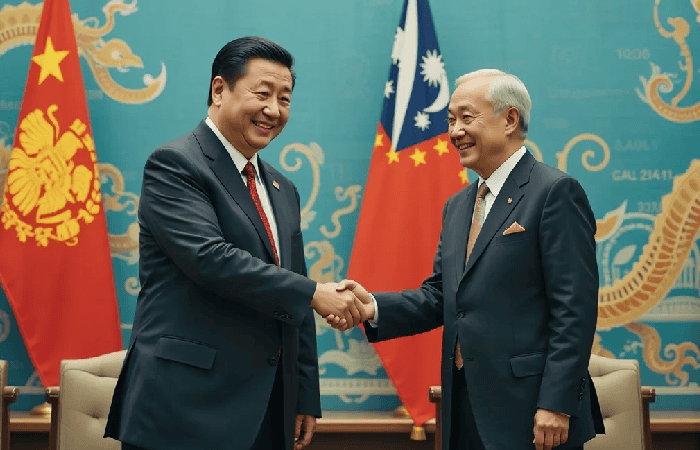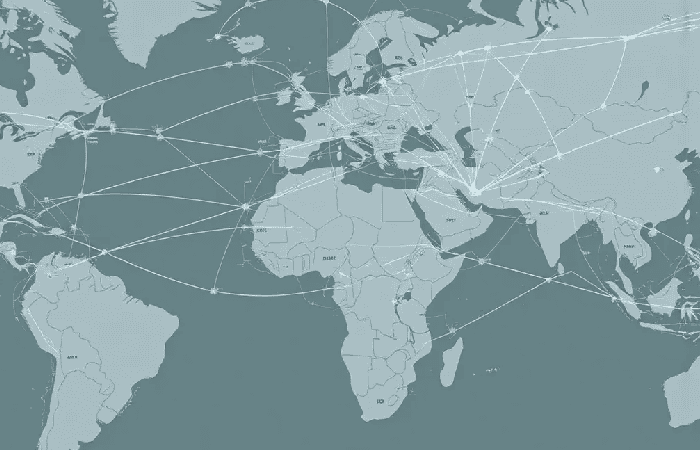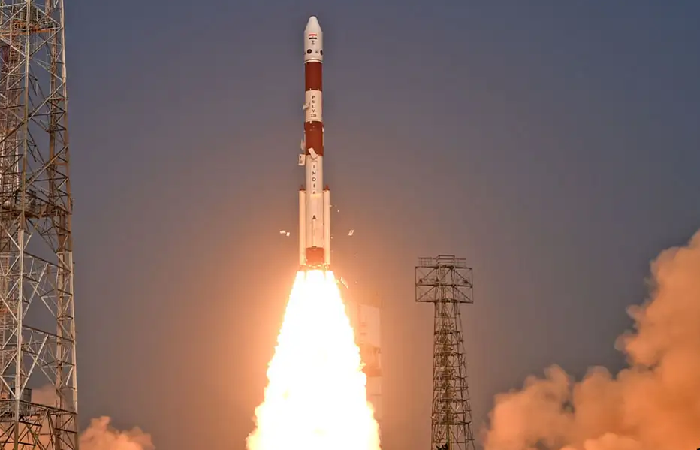Trump's Tariffs: An Impossible Choice for China's Neighbors

The resurgence of trade tensions under a potential second Trump administration is casting a long shadow over Southeast Asia, forcing countries in the region to navigate a complex and precarious economic landscape. Trump's previous imposition of tariffs on China has already created ripple effects, and the prospect of renewed or escalated tariffs presents an "impossible choice" for China's neighbors, compelling them to balance economic opportunities with geopolitical risks.
The Legacy of Trump's Initial Tariffs
During his first term, former President Trump initiated a trade war with China, imposing tariffs on billions of dollars worth of Chinese goods. The stated aim was to reduce the trade deficit, protect American industries, and address what the U.S. perceived as unfair trade practices.(Tax Foundation) These tariffs, however, had far-reaching consequences, impacting global supply chains, raising costs for American consumers, and altering trade flows.
One immediate effect was a diversion of trade. Due to tariffs, some Chinese manufacturers sought alternative markets, including Southeast Asia. This led to a surge of Chinese imports into the region, sometimes at prices that undercut local producers, creating challenges for domestic industries.(Yahoo News)
The Tightrope Walk: Balancing China and the U.S.
Southeast Asian nations find themselves in a delicate balancing act between the economic influence of China and the strategic importance of the United States. China has become a major trading partner for many countries in the region, with trade volumes increasing significantly in recent years.(CNN)

Many Southeast Asian countries have strong security ties with the U.S. and seek to maintain access to the U.S. market. The challenge lies in navigating these competing interests without alienating either power.
The Economic Impact of Renewed Tariffs
The potential for renewed or escalated tariffs under a second Trump administration raises several concerns for Southeast Asia:
-
Trade Diversion and Market Distortion
If the U.S. imposes higher tariffs on Chinese goods, there could be a further surge of Chinese products into Southeast Asia, exacerbating the challenges faced by local manufacturers. This could lead to increased competition, price pressures, and potentially, the displacement of domestic industries. -
Supply Chain Disruptions
Many Southeast Asian countries are integrated into global supply chains, with components and intermediate goods flowing between China, the U.S., and the region. Tariffs could disrupt these supply chains, raising costs and creating inefficiencies for businesses operating in the region. -
Investment Flows
Trade tensions could also affect investment flows. Companies seeking to avoid tariffs may relocate production facilities to Southeast Asia, but this could also lead to overcapacity and other distortions in the region's economies. -
Geopolitical Risks
Southeast Asian countries want to avoid being forced to choose between the two powers, as this could damage their relationships with one or both countries.
China's Response and Regional Strategy

In response to the trade war, China has been actively seeking to strengthen its economic ties with Southeast Asia. This includes promoting trade and investment, as well as infrastructure development through initiatives like the Belt and Road Initiative (BRI). President Xi Jinping of China has called for greater collaboration with Southeast Asian nations and urged them to oppose "unilateral bullying."CNN
China's strategy also involves promoting regional trade agreements, such as the Regional Comprehensive Economic Partnership (RCEP), which includes China, ASEAN countries, and other Asia-Pacific nations. These agreements aim to reduce trade barriers and promote economic integration, potentially offsetting the impact of U.S. tariffs.
Strategies for Southeast Asian Nations
Faced with these challenges, Southeast Asian nations are exploring various strategies to mitigate the risks and capitalize on the opportunities presented by the trade war:
- Diversification
One key strategy is to diversify their economies and reduce their reliance on any single trading partner. This involves promoting new industries, attracting foreign investment from a wider range of countries, and expanding trade relationships with other regions.
- Strengthening Regional Integration
Southeast Asian countries are also working to strengthen regional integration through initiatives like the ASEAN Economic Community. This entails lowering regional trade barriers, standardizing laws, and encouraging more connectedness.
- Investing in Infrastructure
Investing in infrastructure is crucial for improving competitiveness and attracting foreign investment. This entails lowering regional trade barriers, standardizing laws, and encouraging more connectedness.
- Enhancing Skills and Innovation
To move up the value chain and compete in the global economy, Southeast Asian countries need to invest in education, skills training, and innovation. This includes promoting STEM education, supporting research and development, and fostering entrepreneurship.
- Engaging in Diplomacy
Southeast Asian countries need to engage with both the U.S. and China, as well as other key partners, to promote their interests and maintain regional stability.

The Broader Economic Impact
The impact of Trump's tariffs extends beyond Southeast Asia, affecting the global economy as a whole. The World Trade Organization (WTO) has warned that tariffs could lead to a shrinking of global trade.(BBC) Trade wars create uncertainty, disrupt supply chains, and raise costs for businesses and consumers, ultimately hindering economic growth.
Impact on American Businesses
Many U.S. companies rely on imports from China for components and finished goods, and tariffs raise their costs, making them less competitive. Some businesses have even faced "irreversible" damage due to the tariffs.(CNBC)
Impact on Europe
Europe has also been affected by Trump's trade policies. The U.S. has imposed tariffs on certain European goods, and the EU has retaliated with its own tariffs. These trade tensions have created uncertainty and hindered trade between the two regions.(Bruegel)
Gold as a Safe Haven
Amidst the trade war fears, gold prices have surged, reflecting investors' desire for safe-haven assets during times of economic uncertainty.(BBC)
The Future of Trade
The future of trade remains uncertain, with the potential for further disruptions and realignments. The rise of protectionism and trade tensions poses a challenge to the multilateral trading system, which has been a cornerstone of global economic growth for decades.
However, there are also opportunities for countries to adapt and thrive in the new trade landscape. By diversifying their economies, strengthening regional integration, and investing in innovation, countries can build resilience and capitalize on new opportunities.
The key will be to navigate the complex geopolitical landscape with pragmatism and diplomacy, seeking to promote cooperation and avoid confrontation.
Conclusion
Trump's tariffs have created an "impossible choice" for China's neighbors in Southeast Asia, forcing them to balance economic opportunities with geopolitical risks. The potential for renewed or escalated tariffs under a second Trump administration raises concerns about trade diversion, supply chain disruptions, and investment flows.
Southeast Asian nations are responding by diversifying their economies, strengthening regional integration, investing in infrastructure, and engaging in active diplomacy. The broader economic impact of Trump's tariffs extends beyond Southeast Asia, affecting the global economy as a whole. The future of trade remains uncertain, but countries that adapt and innovate will be best positioned to thrive in the new landscape.
The situation requires careful navigation and strategic decision-making to ensure sustainable economic growth and regional stability. The choices made by Southeast Asian nations in the coming years will have significant implications for the region and the global economy.
The long-term effects of these trade policies are still unfolding, but it is clear that they have created a more complex and uncertain world for businesses and policymakers alike. The need for international cooperation and dialogue is greater than ever to address the challenges and opportunities presented by the changing global trade landscape.
The decisions made by the U.S., China, and Southeast Asian nations will shape the future of trade and the global economy for years to come. A focus on collaboration, innovation, and sustainable development will be essential for navigating the challenges and building a more prosperous and equitable future for all.
The ongoing trade tensions serve as a reminder of the need for a rules-based international trading system that promotes fairness, transparency, and stability. Strengthening the WTO and other international institutions is essential for addressing the challenges of the 21st century and ensuring a more prosperous and peaceful world for all.



